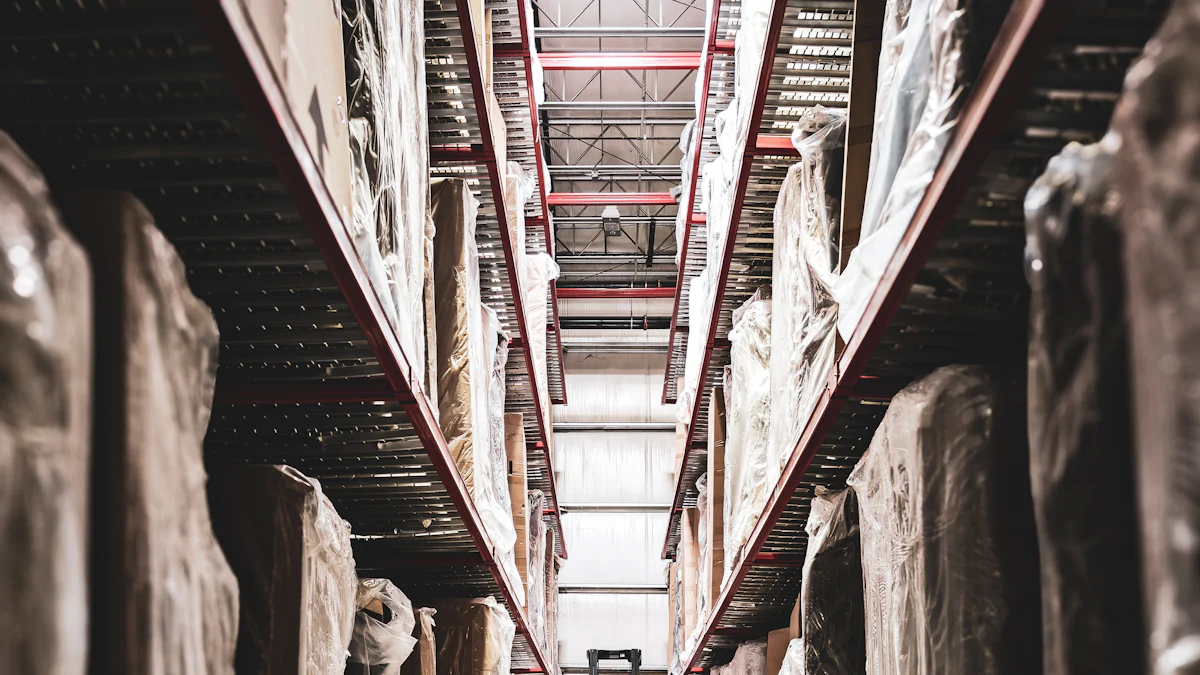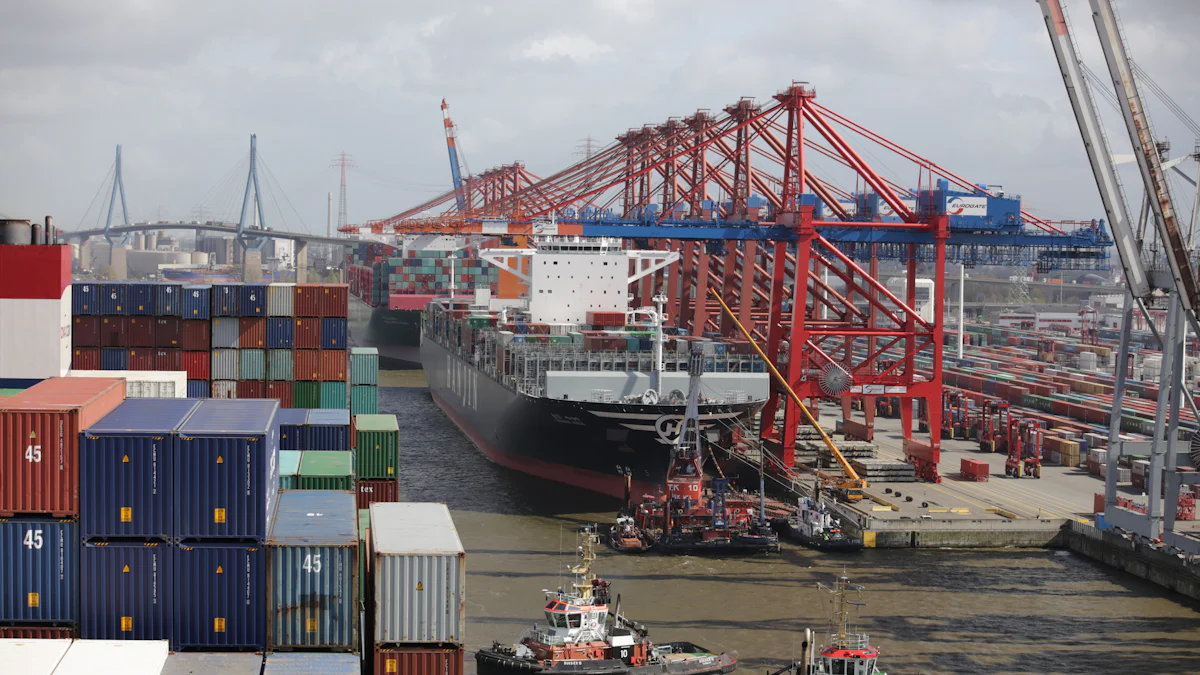4 Strategies to Improve Product Sourcing

Efficient product sourcing has become a cornerstone of success for businesses in 2025. Companies face challenges like cost control, supply chain resilience, and regulatory compliance. These hurdles demand innovative solutions to stay competitive. A recent study shows that 63% of high-performing procurement organizations now track sustainability measures, while CPO-level priorities for corporate social responsibility have risen by 22%. These trends highlight the growing need for smarter sourcing strategies. By adopting modern tools and practices, you can overcome logistical complexities and economic risks while building a resilient supply chain.
Key Takeaways
Use AI tools to find good suppliers fast. These tools check data to locate different suppliers and spot risks, building a strong supplier group.
Let machines handle boring tasks to save time. Use automation for things like orders and talking to suppliers.
Work with many suppliers to avoid problems. Having more suppliers keeps things steady and brings better prices and services.
Choose eco-friendly suppliers to make customers happy. Buying from ethical suppliers helps your brand and attracts green shoppers.
Study data to make better sourcing choices. Look at past and current data to see trends, manage stock, and improve buying.
Leverage AI and Automation in Product Sourcing

Use AI for Supplier Discovery
Benefits of AI in identifying reliable and diverse suppliers
AI has revolutionized supplier discovery by making the process faster, more accurate, and cost-effective. You can now analyze global databases to identify suppliers that meet specific criteria, such as certifications or performance records. This technology uncovers niche suppliers, helping you source rare materials that traditional methods might miss. AI also evaluates potential risks, allowing you to avoid unreliable suppliers before signing contracts. Many platforms even offer sustainability scoring, enabling you to prioritize environmentally friendly suppliers. By leveraging AI, you gain access to a broader and more reliable supplier network, ensuring your sourcing process aligns with your business goals.
Tools and platforms for AI-driven supplier discovery
Several AI tools simplify supplier discovery. Platforms like Veridion process vast amounts of data weekly to deliver accurate supplier information. You can input your criteria, and the system provides a list of potential suppliers with detailed profiles. These profiles include performance metrics, certifications, and compliance standards. AI tools also rank suppliers based on their reliability and update these rankings continuously. Key features of these platforms include:
Data aggregation to scan supplier databases and external sources.
Filtering and ranking suppliers using predefined criteria.
Risk assessment through predictive algorithms.
By adopting automated sourcing platforms, you can streamline your operations and focus on strategic decisions.
Automate Repetitive Sourcing Tasks
Examples of sourcing tasks that can be automated
Repetitive tasks in sourcing often consume valuable time and resources. Automating these tasks can transform your workflow. For instance, robotic process automation can handle tasks like purchase order creation, invoice processing, and supplier communication. Automated systems can also track supplier performance and flag inconsistencies. These tools ensure that routine tasks are completed efficiently without manual intervention.
How automation reduces errors and improves efficiency
Automation minimizes human error by standardizing processes. For example, automated sourcing platforms reduce the risk of incorrect data entry in purchase orders. They also ensure compliance with regulations by cross-checking supplier credentials. This transformation not only enhances accuracy but also boosts efficiency. With automation, you can allocate resources to more strategic activities, improving overall productivity and decision-making.
Build Strong Supplier Relationships
Diversify and Strengthen Supplier Networks
Importance of reducing reliance on single sources
Relying on a single supplier can create significant risks for your business. Supply chain disruptions, increased costs, and declining service levels are common issues when you depend on one source. Diversifying your supplier network reduces these vulnerabilities. By spreading your sourcing needs across multiple suppliers, you ensure greater stability and flexibility. This approach also fosters competition among suppliers, which can lead to better pricing and improved service quality.
Exploring emerging markets for supplier diversification
Emerging markets offer excellent opportunities for supplier diversification. These regions often provide access to cost-effective materials and innovative manufacturing processes. Expanding your sourcing efforts to these markets can help you discover untapped resources and reduce dependency on traditional suppliers. For example, Southeast Asia and parts of Africa have become popular destinations for businesses seeking reliable suppliers. By exploring these markets, you can strengthen your supply chain and enhance its resilience.
Foster Collaboration and Innovation
Tips for building trust and long-term partnerships
Building trust with your suppliers is essential for creating long-term partnerships. Trust allows you to work more effectively and achieve mutual goals. As one expert noted, “Trust is crucial to build and sustain strong supplier relationships. The authors developed a tool to help companies quantify it, which provided valuable insights into how to turn a low-trust relationship into a high-performing partnership.” You can foster trust by maintaining open communication, honoring commitments, and sharing critical information. Regularly evaluating your suppliers’ performance also demonstrates your commitment to the partnership.
Collaborating with suppliers to optimize materials and processes
Supplier collaboration plays a vital role in improving sourcing efficiency. By working closely with your suppliers, you can align on production schedules, enhance quality control, and explore innovative materials. Many companies partner with contract manufacturers to access advanced technologies without heavy investments. This collaboration often leads to better product quality, shorter lead times, and greater market responsiveness. Regularly reviewing your suppliers’ capabilities ensures they continue to meet your business needs and expectations.
Embrace Sustainable Sourcing Strategies

Source from Ethical and Sustainable Suppliers
Importance of sustainability in 2025
Sustainability has become a critical factor for businesses in 2025. Consumers increasingly demand eco-friendly products, especially younger generations who prioritize brands that align with their values. By sourcing from ethical and sustainable suppliers, you can meet these expectations and gain a competitive edge. Sustainable procurement not only enhances your brand image but also attracts more customers. Companies that adopt these practices often experience long-term cost reductions and increased revenues. For instance, sustainable practices can decrease supply chain costs by 9% to 16% while boosting revenues by up to 20%. Tracking emissions across your supply chain also strengthens partnerships with suppliers and transforms relationships into collaborative efforts.
How to vet suppliers for ethical and sustainable practices
Vetting suppliers for ethical and sustainable practices requires a structured approach. Start by evaluating their labor standards, including policies on fair compensation and working hours. Assess their health and safety measures to ensure worker well-being. Investigate their sourcing of raw materials and check for certifications that confirm sustainable practices. Examine their energy usage and carbon footprint, focusing on renewable energy initiatives. Review their waste management strategies, such as recycling policies and eco-friendly packaging. Finally, inquire about their innovations in sustainability and compliance with environmental laws. This thorough vetting process ensures your suppliers align with your sustainability goals.
Transition to Circular Supply Chains
Benefits of circular supply chains for efficiency and sustainability
Circular supply chains offer significant advantages for both businesses and the environment. This model extends the life of materials, reducing waste and limiting ecological footprints. It minimizes CO2 emissions and harmful byproducts, leading to less pollution and fewer landfills. Businesses benefit from cost savings by reducing material and waste disposal expenses. Circular supply chains also enhance brand image, attracting eco-conscious customers and fostering loyalty. Transparency within this model improves decision-making and strengthens relationships with stakeholders. By adopting circular practices, you can achieve greater efficiency while contributing to a more sustainable future.
Steps to implement a circular supply chain model
Transitioning to a circular supply chain requires strategic planning. Begin by closing resource loops, which involves redirecting post-consumption materials back into the supply chain. Focus on slowing resource loops by extending product lifespans through repair or refurbishment. Narrow resource loops by minimizing resource use and environmental impacts. Incorporate regenerative resource flows to enhance natural capital. Additionally, prioritize responsible sourcing and collaborate with suppliers to meet global sustainability standards. By following these steps, you can create a supply chain that supports long-term sustainability and operational efficiency.
Utilize Data Analytics for Smarter Sourcing Strategies
Analyze Historical and Real-Time Data
Identifying trends and inefficiencies in sourcing
Analyzing historical and real-time data allows you to uncover patterns and inefficiencies in your sourcing processes. By examining past procurement records, you can identify recurring issues such as delays, cost overruns, or underperforming suppliers. Real-time data provides immediate insights into current operations, helping you address problems as they arise. For example, tracking supplier performance in real time enables you to detect inconsistencies and take corrective action quickly. This proactive approach improves procurement efficiency and strengthens your supply chain.
Data analysis also reveals trends that can guide your strategic sourcing decisions. For instance, you might notice seasonal fluctuations in demand or shifts in supplier pricing. Recognizing these patterns helps you plan better and avoid unnecessary costs. By leveraging both historical and real-time data, you can optimize your sourcing strategies and enhance overall procurement outcomes.
Tools for data-driven decision-making
Several tools can help you make data-driven decisions in procurement. These platforms simplify data analysis and provide actionable insights:
Alteryx: Processes data efficiently and generates insights with an intuitive interface.
TrendMiner: Focuses on pattern recognition and performance forecasting for engineers and data scientists.
TIBCO Spotfire: Combines analytics with data science for complex statistical evaluations.
Minitab: Uses machine learning to deliver predictive insights.
Google Data Studio: Transforms raw data into interactive dashboards and reports.
Microsoft Power BI: Offers comprehensive analytics for data modeling, sharing, and visualization.
Using these tools, you can streamline supplier management and improve procurement efficiency.
Predict Future Demand with Advanced Analytics
Benefits of demand forecasting for sourcing efficiency
Demand forecasting plays a crucial role in improving sourcing efficiency. Accurate forecasts allow you to:
Maintain optimal inventory levels, reducing carrying costs and preventing stockouts.
Align procurement with anticipated demand, minimizing waste and saving costs.
Ensure product availability, enhancing customer satisfaction and loyalty.
Plan production schedules effectively, avoiding overproduction or underproduction.
Allocate resources like labor and raw materials more efficiently.
Optimize your supply chain by providing visibility into future requirements.
By predicting demand accurately, you can align your sourcing efforts with business needs and reduce inefficiencies.
How predictive analytics enhances sourcing strategies
Predictive analytics transforms your sourcing strategies by providing actionable insights. It analyzes past trends and data to improve decision-making. For example, it helps you anticipate demand and adjust inventory levels accordingly. Predictive tools refine supplier selection and negotiation tactics, ensuring you secure the best deals. They also uncover cost-saving opportunities and mitigate risks like supply chain disruptions. Additionally, predictive analytics optimizes resource allocation by identifying growth areas and potential challenges. This technology empowers you to make smarter, data-driven procurement decisions, ensuring long-term success.
Improving product sourcing requires a strategic approach. Leveraging AI and automation, building strong supplier relationships, embracing sustainable practices, and utilizing data analytics are essential strategies. Proactively adopting these methods ensures your business stays competitive in 2025.
Emerging technologies and trends can further future-proof your sourcing processes. Consider integrating automation and AI to streamline workflows. Shift to ethical sourcing to meet consumer demands. Use data-driven insights to adapt to personalization trends. Embrace agile methodologies for flexibility and adopt innovative strategies to enhance supply chain resilience. These steps will position your business for long-term success.
FAQ
What is the first step to improving product sourcing?
Start by analyzing your current sourcing process. Identify inefficiencies, risks, and areas for improvement. Use tools like data analytics to evaluate supplier performance and costs. This analysis helps you create a roadmap for implementing smarter sourcing strategies.
How can small businesses afford AI-driven sourcing tools?
Many AI tools offer scalable pricing plans. Start with free or low-cost platforms like Google Data Studio or Microsoft Power BI. These tools provide essential features for supplier discovery and data analysis without requiring a large investment.
Why is supplier diversification important?
Supplier diversification reduces risks like supply chain disruptions and price fluctuations. It ensures stability by spreading your sourcing needs across multiple suppliers. This approach also fosters competition, leading to better pricing and service quality.
How do you find ethical suppliers?
Research suppliers’ labor practices, certifications, and environmental policies. Use platforms that rank suppliers based on sustainability metrics. Ask for documentation on their sourcing methods and compliance with ethical standards.
What are the benefits of circular supply chains?
Circular supply chains reduce waste, lower costs, and improve sustainability. They extend the life of materials through recycling and refurbishment. This model also enhances your brand’s reputation and attracts eco-conscious customers.
See Also
Effective Tactics for Negotiating with Wholesale Suppliers
Boosting Revenue Through Outdoor Gear Wholesale Tactics
Essential Advice for Finding Trustworthy Camping Gear Suppliers
Guidelines for Finding Dependable Wholesale Flashlight Suppliers
